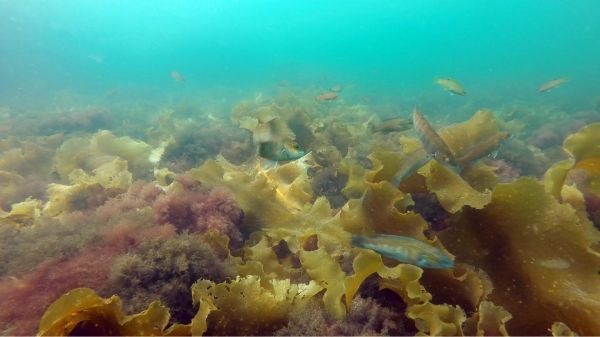When it comes to finding protection and a safe feeding ground, fish rely on towering blades of seaweed, like kelp, to create a three-dimensional hiding space. Kelp forests have been shown to be one of the most productive systems in the ocean with high biodiversity and ecological function. However, in recent decades, many kelp habitats have been taken over and replaced by lower turf-dominated seaweed species. Researchers at the University of New Hampshire have found that this change in the seascape may impact the behavior of fish and could be leaving them less options for refuge and more vulnerable to predators.
“In each case, the cunner preferred and sought out the kelp, or similar seaweed species, to hide in,” said Jennifer Dijkstra, research assistant professor in the Center for Coastal and Ocean Mapping at UNH. “Over and over, they gravitated to the kelp that is taller and because of its blade-like structure, provides a canopy to hide under.”
Three experiments were conducted as part of the research recently published in the Journal of Experimental Marine Biology and Ecology; in situ video observations, a refuge choice study, and a foraging efficiency study. The video of cunner, a residential mid-trophic level fish, in their habitat showed that the fish preferred the kelp almost three times as much. The refuge choice experiment, where different seaweed scenarios were created for them to hide, supported the video observations that in all cases, kelp was the refuge of choice. The foraging efficient study showed very little difference between seaweed habitats.
“Our results suggest that the refuge-seeking behavior of the cunner may be impacted by the ongoing shift we have seen in our earlier studies of the increased dominance of the Dasysiphonia japonica (invasive seaweed) in the southern Gulf of Maine,” said Dijkstra. “By losing their preferred refuge, the tall canopy-forming kelps, cunner were left with little option but to use the lower invasive seaweed turfs, which could give them less protection.”
Read more at University of New Hampshire
Image: Cunner fish still visible while looking for refuge in kelp in the Isles of Shoals. (Credit: Kristin Mello/UNH)


